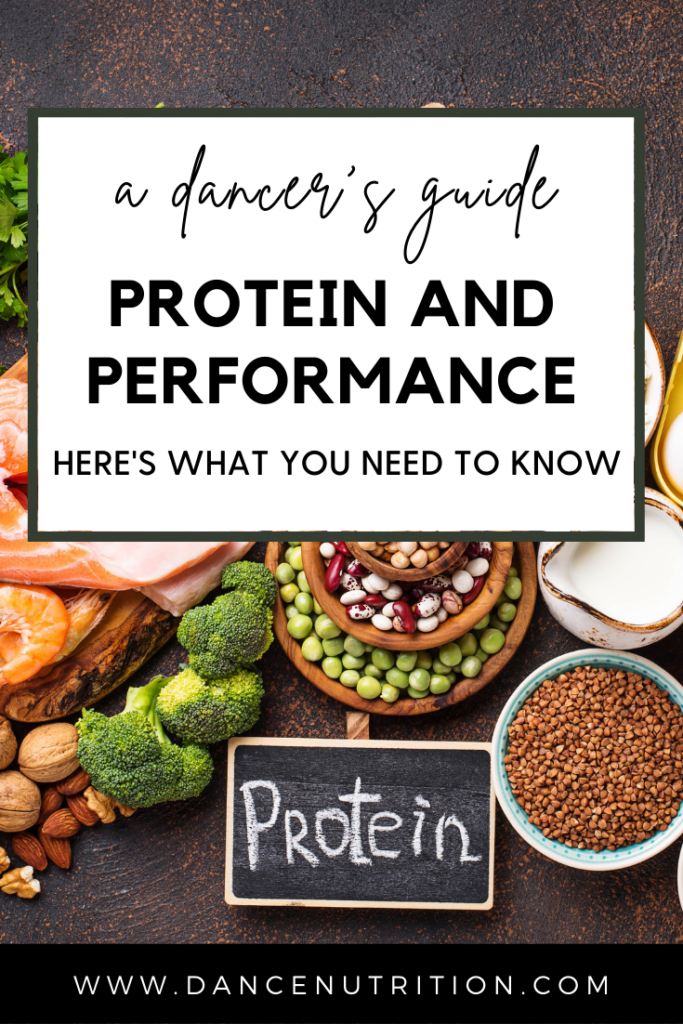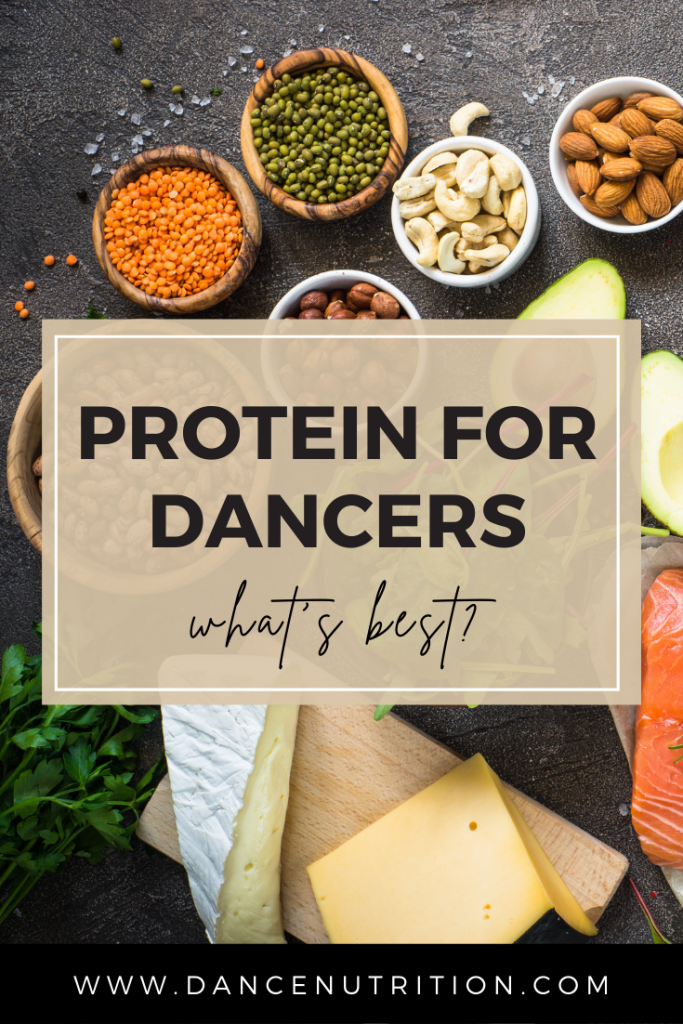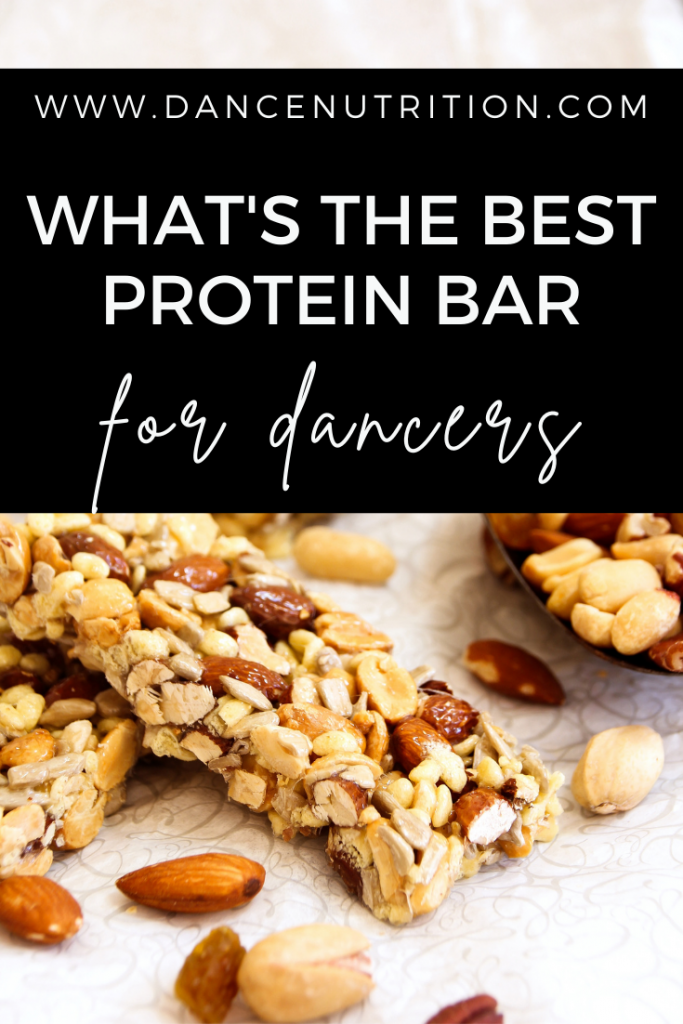How much protein does a dancer need? Quick facts
Currently. much of the scientific literature surrounding protein recommendations remains exclusive to the sports community. However, the physical intensity of dance allows us to presume that requirements are comparable. What we know is this: when compared to the general population, dancers do have slightly higher protein needs. According to the International Association of Dance Medicine and Science, the recommendation of protein for dancers is a range of 12%–15% of calories— or, 1.2-1.7 grams per kilogram body weight per day.
But since dancers are more vulnerable to perfectionism and disordered eating, I don’t encourage them to calculate or track daily protein intake. This is also because, for nearly all dancers of all ages and levels, individual protein needs vary greatly. If concerns exist, such as a dancer feeling worried that they are eating too little (or too much) protein, then it’s recommended that they consult with a licensed Registered Dietitian Nutritionist who is familiar with the specific needs of a dancer’s body. Together, the dancer and dietitian can ensure whether or not their current protein intake is supporting their needs.
Protein for dancers: context matters
When it comes to nutrition for dancers, I often emphasize the importance of building a balanced plate: one that incorporates carbohydrates, proteins, and fats. Before we dive into the details about protein, let’s recap the two other key nutrients in a dancer’s balanced diet:
- Carbohydrates are your main energy source, especially for dance. Carbs fuel both high-intensity and prolonged physical activity. When your diet includes enough carbohydrates, you maintain adequate glycogen (the storage form of carbs), which allows you to dance longer and stronger. Click here to learn more about the important role of carbohydrates in a dancer’s diet.
- Fat is your primary fuel source for low to moderate-intensity dancing (like adagio). Fat keeps your hormones balanced, supports your immune system, makes up the very structure of your body’s cells, and facilitates nerve actions. The fat added to your meals and snacks is also necessary for promoting your body’s absorption of fat-soluble vitamins, along with providing your body with essential fatty acids and phytonutrients. Click here to learn more about the important role of fat in a dancer’s diet.
The importance of protein for dancers
The benefits of protein are vast but most notable is its role in rebuilding and repairing muscle tissue. This is especially important for dancers, whose muscles are constantly subject to wear and tear from intense movement. But the benefit of protein does not end here. Protein is also essential for:
- Supporting the structure of your organs, bones, and tissues.
- Building the enzymes and antibodies needed to support metabolic functioning and immune defense.
- Being part of the framework for your body’s hormones, which support strong bones. A growing body of evidence supports protein for strong bones.
- Promoting feelings of fullness, especially in the period between meals and snacks.
What are amino acids?
Amino acids are the building blocks of all proteins. Whether it’s the protein on your plate or the protein in your body (like your muscle tissue and organs), it’s composed of amino acids. There are 20 main amino acids known to support the human body and nine of them are considered essential. Essential amino acids cannot be created by the body and must be obtained from the human diet.
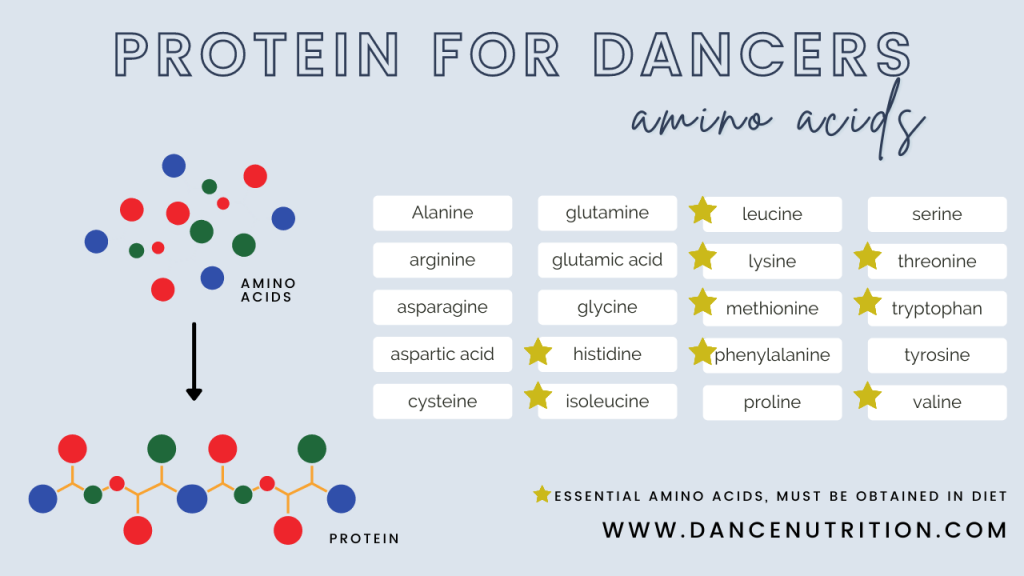
Protein and energy
Carbohydrates and fat are your primary energy sources, but if either of these macronutrients run low (such as with carb- and/or fat-restricted dieting), your body will turn to stored protein to fuel it. In this instance, your muscle tissue (sometimes referred to as lean body mass) is broken down in an effort to supply amino acids for energy production. When amino acids are used for energy production, they’re unable to rebuild and repair working muscles. The end result? Dancers lose muscle and therefore, strength.
But I’ve heard that protein can help my energy!
Protein CAN support your energy needs. As part of your meal or snack, protein helps to slow digestion and ultimately delay the breakdown and absorption of carbohydrates. This digestive process supports steadier blood sugar levels and maintains energy for a few hours (in comparison to the 15-30-minute energy rush following a carb-only snack). Dancers can prolong their energy in a class by simply pairing a source of protein (ie. cheese) with a source of carbohydrates (ie. crackers).
Animal vs. Plant Protein: What’s The Difference?
We can classify the protein in food as either animal proteins or plant proteins. Animal proteins include meat, poultry, fish, dairy products (like yogurt, cheese, and milk), and eggs. When compared to plant proteins, animal proteins contain a higher biological value. This means that animal proteins (1) are more efficiently utilized by the body and (2) contain all of the essential amino acids mentioned earlier.
On their own, plant-based foods (like legumes, grains, veggies, and fruit) do not contain all nine essential amino acids. But when a variety of plant-based proteins is consumed, a plant-based dancer can easily meet their protein needs throughout the day and week
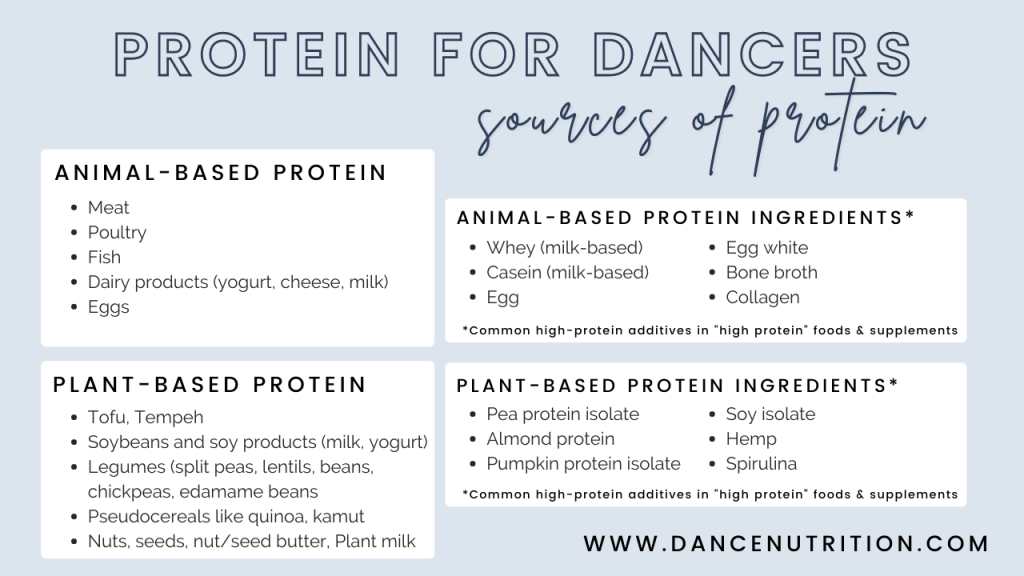
Am I eating enough protein?
Low-calorie diets and vegan diets (without the support of a dietitian) can challenge a dancer’s ability to sufficiently meet their protein needs. But because of the large impact of diet (and wellness) culture in the dance industry, protein is often over-emphasized. Since carbohydrates and fat tend to be feared among dancers, it’s common to misunderstand recommendations. Many dancers (including vegan dancers) aren’t just meeting their protein needs, but they’re actually surpassing them. Here are a few prompts to consider when assessing whether your daily meal plan is sufficient in protein:
- In general, are you including a variety of quality protein sources throughout your week? Examples include fish, eggs, meat, tofu, tempeh, and lentils. If you are plant-based, you may need to actively aim for a few extra sources (beans + lentils + nuts (or seeds) + grains + veggies).
- Are you including a balanced meal or snack within the hour after intense dancing?
- Are you eating a meal or snack every 2-4 hours (depending on your personal schedule and activity level)? If not, an extra protein-rich bedtime snack might benefit continued muscle repair. Read this article to learn more about how dancers can meal plan in a way that is sustainable.
- Are you planning for emergencies by packing extra snacks on hand? Protein bars and trail mix are examples.
- How often are you relying on protein supplements? Consuming bars and powders multiple times a day can be a sign that you’re surpassing your protein needs.
I hear a lot about how great protein is… how and when should I prioritize it?
Protein is ESSENTIAL for our bodies (hence the term: essential amino acids). But protein works in synergy with the other macronutrients (carbs and fat) and therefore, should not be singled out.
There is sufficient research that supports the benefits of protein after exercise for stimulating muscle protein synthesis. This is why we Sports Dietitians encourage a post-performance recovery meal (or snack). But if you’re going to be consuming a meal within the next hour after dancing, then there wouldn’t be a need to eat an extra protein-rich shake or snack (unless your specific meal plan calls for it, such as when dancers are needing to gain weight).
In regard to the post-performance recovery window, a natural increase in insulin sensitivity (TW: stigmatizing weight language) means that including carbohydrates as part of that recovery meal or snack will optimize muscle recovery by supporting energy from glycogen replenishment. This, along with increases in Muscle Protein Synthesis (MPS) from amino acid intake, will enhance overall muscle recovery.
Bottom line: consuming enough protein, as part of a balanced meal plan, throughout your entire day and week is important. When it comes to your meal plan, overall patterns matter.
Is it possible to eat too much protein?
Like any food or nutrient, it is possible to overdo it. Excessive intakes of high-protein foods can displace opportunities for eating other nourishing foods like veggies, fruits, grains, and sources of heart-healthy fats. High-protein diets might also place stress on the kidneys in those with medical conditions like high blood pressure and diabetes.
It has also been previously hypothesized that high-protein diets may increase the risk of dehydration by increasing urine output. Therefore, it’s often advised that protein supplements be consumed alongside adequate fluids. Though the evidence to date does not support an increased risk of dehydration in otherwise healthy individuals who maintain a normal fluid intake (at least 3 liters for those 14 and older), dancers need to consider their unique circumstances. Similar to athletes, dancers require more fluids to maintain proper hydration. This is especially true when training in hot and humid climates. So, the evidence remains limited and inconclusive in the context of dancer populations. From my clinical experience (which, of course, is not “evidence” but mere anecdotal information to consider)… most often, dancers do not drink enough throughout the day and are already more vulnerable to fluid deficits. Bottom line: are excessive protein intakes worth the risk?
Some dancers fear an excess of protein will cause “bulking.” But for the body to gain muscle, it requires way more than just protein. Adequate intake of one’s total daily calories and high levels of strength training also plays a role. But in general, “bulking” is especially uncommon for younger dancers whose bodies are still using a surplus of energy to support growths in height.
As mentioned earlier, anything in excess is both unwarranted and discouraged. Consistent, but not excessive, protein intake should be encouraged throughout the course of a day and week.
What are the best protein bars for dancers?
Protein bars are a convenient way for dancers to optimize post-performance recovery windows, especially when their next meal surpasses the hour after dancing. Bars can also provide easy snack options prior to dancing.
Consider this: bars shouldn’t replace full meals nor make up every snack consumed. Including 1-2 bars per day is harmless and for some dancers, may be very beneficial (2 is a bit much, but if your day is jam-packed and you didn’t have time to prep additional snacks, that second bar is likely warranted). Here are a few tips to consider when looking for bars:
- Look for energizing ingredients like whole fruits (dates, dried bananas, and grains like oats are examples).
- Consider the fat incorporated into the bar: nuts, seeds, and nut butter balance the nutrient profile and boost your intake of essential fatty acids.
- Protein supplements, like protein powders, are often added to bars. Though not necessary, these additives can be part of a dancer’s meal plan. Examples include soy isolate, whey isolate, eggs, pea protein, and brown rice protein. Bars with protein additives will often contain up to 10 grams (or more) of protein per bar.
- Limit ingredients like artificial sweeteners, sugar alcohols (erythritol, xylitol, maltitol) & synthetic fibers (inulin, chicory root), which can cause stomach discomfort and gas while dancing.
- Trial options with different spices like cocoa powder and cinnamon to enhance flavor and interest.
To learn more about protein bars for dancers, read this article.
What about protein powder?
I’ve previously discussed what dancers need to consider when deciding if a protein powder is right for them. You can read that article here. Generally, protein powder isn’t a necessity if a dancer is eating adequately throughout the day.
Help! I’m a plant-based dancer. Am I eating enough protein?
I’ve previously discussed how plant-based dancers can meet their needs without including animal foods in their diet. To learn more about the nutrition needs of plant-based vegan and vegetarian dancers, click here. This is especially important because a single source of plant-based protein (ie. beans) does not contain all essential amino acids. To optimize bioavailability and enhance protein utilization, dancers should first ensure that their calorie needs are met through an abundance and variety of plant-based foods. Examples include:
- Tofu
- Tempeh
- Soybeans and soy products (milk, yogurt)
- Legumes (split peas, lentils, beans, chickpeas, and edamame beans
- Pseudocereals like quinoa, kamut
- Nuts, seeds, nut/seed butter
- Plant-based milk
